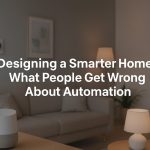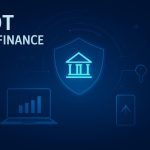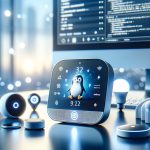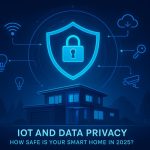In the past decade, the vision of a truly smart home has moved from futuristic fantasy to everyday reality. As we step into 2025, the Internet of Things (IoT) has matured into a robust ecosystem, connecting appliances, security systems, lighting, and even entertainment devices under one seamless digital roof. The result? Homes that are safer, more energy-efficient, and tailored to the unique preferences of every resident. This article explores the latest trends in smart homes, the most innovative IoT devices on the market, and how homeowners can benefit from embracing this technology right now.
1. The Rise of Interconnected Ecosystems
Unlike the early days of smart homes, when devices operated in silos, 2025 has brought about a shift toward fully integrated ecosystems. Today’s smart home platforms—like Apple HomeKit, Google Home, and Amazon Alexa—allow users to control everything from their thermostat to their robot vacuum with a single command or automated routine. These systems now support a wider range of third-party devices, thanks to the widespread adoption of Matter, a universal IoT standard that ensures seamless communication across brands.

2. Energy Efficiency and Sustainability
One of the most compelling reasons to upgrade to a smart home in 2025 is energy efficiency. IoT-enabled thermostats, smart plugs, and intelligent lighting systems can reduce energy consumption by learning your habits and adjusting themselves accordingly. For example, a smart thermostat can sense when you’re away and automatically lower the heating or cooling, while smart blinds can open and close based on sunlight, reducing reliance on artificial lighting.
Smart appliances, such as refrigerators and washing machines, now come equipped with sensors that optimize water and electricity use, lowering utility bills and reducing environmental impact. With the integration of solar panels and home batteries, IoT systems can even manage energy storage and consumption in real-time, helping homeowners make the most of renewable energy.
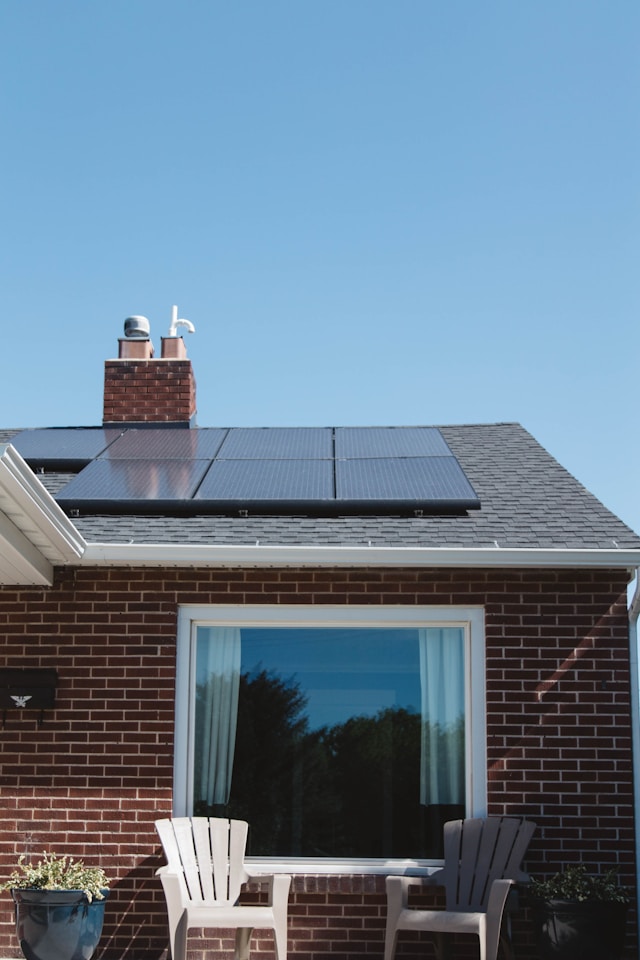
3. Enhanced Security and Peace of Mind
Security remains a top priority for homeowners, and IoT has transformed the way we protect our properties. In 2025, smart security systems are more advanced and easier to use than ever. Doorbell cameras now use AI-powered facial recognition to distinguish between family members, friends, and strangers, sending real-time alerts directly to your smartphone or smartwatch.
Smart locks allow for keyless entry and can generate temporary access codes for guests or service providers. Meanwhile, motion sensors, glass break detectors, and smoke alarms are all connected to a central hub, providing instant notifications in case of emergencies. For those who travel frequently, remote monitoring through high-definition cameras and two-way audio ensures you’re always in touch with what’s happening at home.
Image suggestion: A person checking a smart security app on their phone with a camera in the background.
(Pexels link: https://www.pexels.com/photo/person-holding-black-iphone-5-887751/)

4. Personalized Comfort and Convenience
The smart home of 2025 is all about personalization. Voice assistants have grown smarter, capable of understanding natural language and even recognizing individual voices to tailor responses. Imagine walking into your home after a long day, and the lights adjust to your preferred brightness, your favorite playlist starts, and the climate control sets the perfect temperature—all without lifting a finger.
Smart kitchens are another area of rapid innovation. Connected ovens can suggest recipes based on ingredients in your fridge, while smart coffee makers remember your morning routine and have your brew ready as soon as you wake up. Even mirrors in the bathroom can display your daily schedule, weather updates, and health metrics tracked by IoT-enabled wearables.
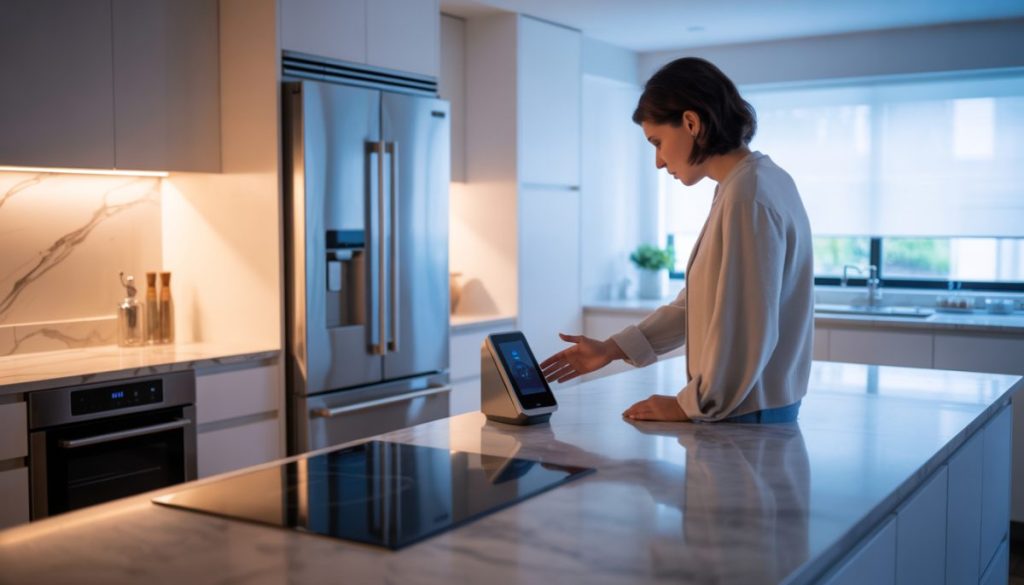
5. Health and Wellness Monitoring
The intersection of IoT and health has led to smarter homes that actively contribute to wellness. Air quality monitors alert you to allergens or pollutants, while smart beds track sleep patterns and adjust firmness for optimal rest. Elderly residents benefit from fall detection systems, medication reminders, and even telehealth devices that connect directly to healthcare providers.
For families, integrated systems ensure the safety of children and pets, sending alerts if a door is left open or if unusual activity is detected. The result is a more holistic approach to home living, where safety, comfort, and wellness are woven into the fabric of daily life.
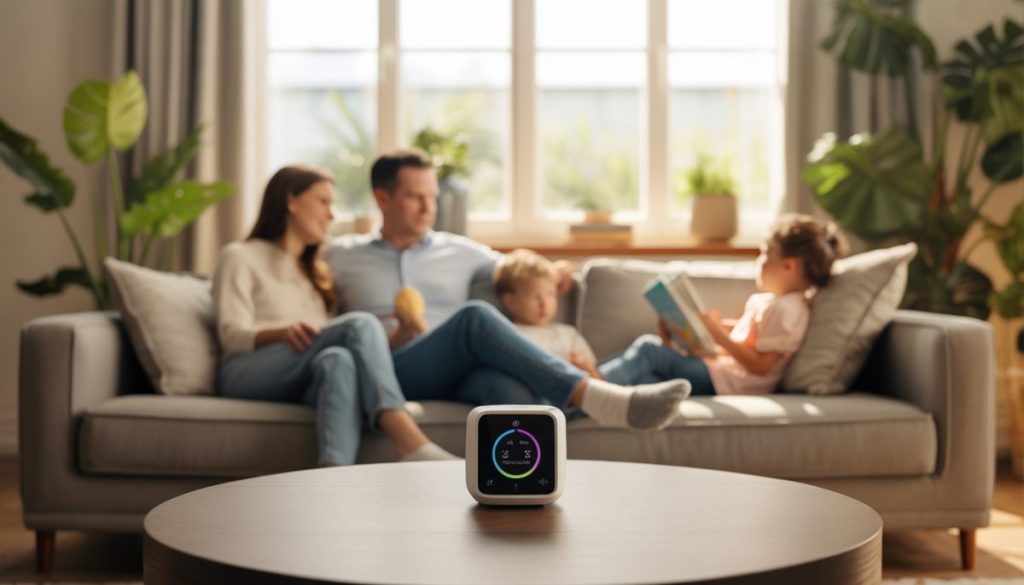
Conclusion: Is It Time to Upgrade Your Home?
With the rapid advancements in IoT technology and the growing accessibility of smart devices, 2025 is the perfect year to invest in a smart home. Not only do these systems offer unparalleled convenience and security, but they also contribute to sustainability and personal well-being. Whether you’re a tech enthusiast or simply looking to make your home more efficient, the smart home revolution has something for everyone.
Are you ready to join the connected living movement? Explore the latest IoT solutions and start transforming your home into a smarter, safer, and more comfortable place today.
- Designing a Smarter Home in 2026: What People Get Wrong About Automation
 Smart homes were once science fiction, but today they’re a reality in millions of households. With voice assistants, smart plugs, and automated lighting systems, it’s easy to assume home automation is simply a matter of plugging in a few devices. Yet, many homeowners quickly discover that “smart” doesn’t always mean simple. In this article, we’ll…
Smart homes were once science fiction, but today they’re a reality in millions of households. With voice assistants, smart plugs, and automated lighting systems, it’s easy to assume home automation is simply a matter of plugging in a few devices. Yet, many homeowners quickly discover that “smart” doesn’t always mean simple. In this article, we’ll… - Automated Online Trading: How IoT is Redefining Financial Markets
 Introduction automated online trading In a world where milliseconds can decide millions, the fusion of Internet of Things (IoT) technology and automated online trading is reshaping global finance. What once relied solely on human judgment now increasingly depends on connected machines, real-time data, and predictive algorithms. From weather sensors influencing agricultural trades to smart logistics…
Introduction automated online trading In a world where milliseconds can decide millions, the fusion of Internet of Things (IoT) technology and automated online trading is reshaping global finance. What once relied solely on human judgment now increasingly depends on connected machines, real-time data, and predictive algorithms. From weather sensors influencing agricultural trades to smart logistics… - The Role of Linux in IoT: Powering the Connected World
 The Internet of Things (IoT) is everywhere—from smart homes and wearable devices to industrial automation and self-driving cars. Behind the scenes, one operating system plays a surprisingly dominant role: Linux. Known for its stability, flexibility, and open-source nature, Linux has become the backbone of countless IoT devices and platforms. But what makes Linux so well-suited…
The Internet of Things (IoT) is everywhere—from smart homes and wearable devices to industrial automation and self-driving cars. Behind the scenes, one operating system plays a surprisingly dominant role: Linux. Known for its stability, flexibility, and open-source nature, Linux has become the backbone of countless IoT devices and platforms. But what makes Linux so well-suited… - The Smart Home Revolution in 2025: How IoT is Transforming Everyday Living
 In the past decade, the vision of a truly smart home has moved from futuristic fantasy to everyday reality. As we step into 2025, the Internet of Things (IoT) has matured into a robust ecosystem, connecting appliances, security systems, lighting, and even entertainment devices under one seamless digital roof. The result? Homes that are safer,…
In the past decade, the vision of a truly smart home has moved from futuristic fantasy to everyday reality. As we step into 2025, the Internet of Things (IoT) has matured into a robust ecosystem, connecting appliances, security systems, lighting, and even entertainment devices under one seamless digital roof. The result? Homes that are safer,… - IoT and Data Privacy: How Safe Is Your Smart Home in 2025? – IoT Security
 The smart home revolution has made everyday life more convenient than ever. From voice assistants that control the lights to security cameras that send alerts directly to your phone, connected devices have become part of our daily routines. But with this convenience comes an important question: how safe is your personal data in a world…
The smart home revolution has made everyday life more convenient than ever. From voice assistants that control the lights to security cameras that send alerts directly to your phone, connected devices have become part of our daily routines. But with this convenience comes an important question: how safe is your personal data in a world…

